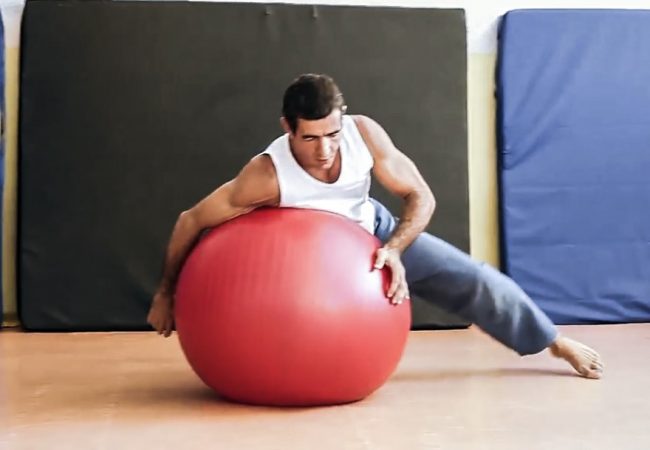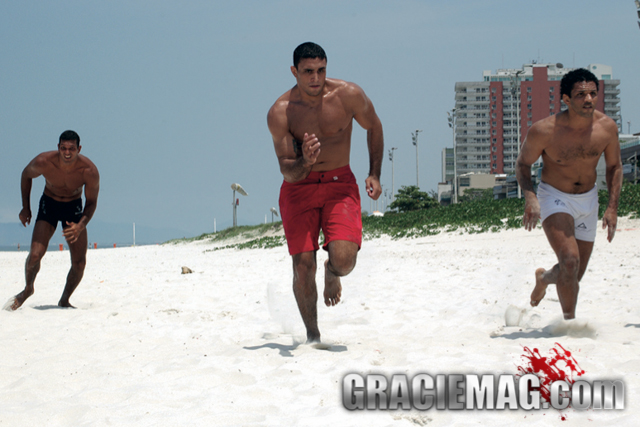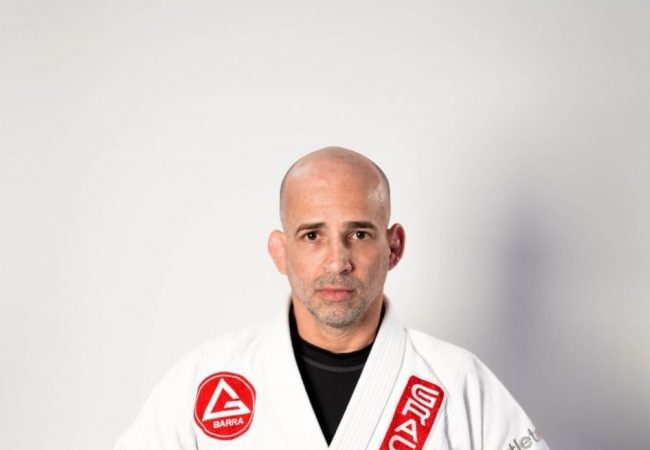[First published in 2006. Part of the Training for Warriors series, by Martin Rooney*]
Tip #1 Imagine this is your Olympic Games
Imagine an Olympic athlete preparing for their Olympic Games. These athletes may train every day for 4-8 years just to perform one single event! With this in mind, you must see yourself at the same level. You must commit yourself in the same manner as an Olympian. This will lead to one day that may change the rest of your life. Take it just that seriously.
Tip #2 Learn What Will be Expected of You
Make sure that you understand the different arts, the history of the sport and every aspect of the sport from a deeper perspective. Each day, review what you have gone over in both reading and training and record it, because you will be expected to have that remembered when we move on to the next topic. This journal will be great to go back and review.
Tip #3 Act As If…
Train like you are getting you ready to be a professional athlete. The first step besides believing you can be one is acting like one. How do you think a professional in the martial arts should act? How do you think he should eat? How should he be getting ready for competition? Answer these questions and then start acting like it. Do it enough and you will become the thing you act out most.
Tip #4 Begin with Quality over Intensity
A big mistake is for young martial athletes is to go too hard, too soon without ever learning the techniques correctly or preparing their body for the volume of work. This will lead to one of two things: A poor technical performance during competition or an injury. Make sure you first start with high quality and low intensity and then raise the intensity while keeping the quality high. Drill moves over and over from both sides. This is how you ensure top performance.
Tip #5 Every Rep Every Set
Every rep, set, breath you take and piece of food you put in your mouth for the rest your life counts. Treat it as such. Finish every drill no matter how it is going. That extra focused rep may make all the difference. Remember that every action is either getting you closer of farther from your goal. Be there, right then.
.
Tip #6 Develop “Mental Flexibility”
I have been to a number of martial arts events, and one thing is always true: they never run on schedule. Knowing this, you have to be ready for anything. You may run late, run early, run on a different mat than expected, or be asked to compete at a different level than you practiced. Relax and go with it. This absence of rigid thinking will allow you to make the best of the situation and grow.
Tip #7 Maximum Efficiency/Minimal Effort
This is an old maxim from the creator of judo. Here, during your training, you want achieve the most with the least effort. Believe in the techniques you are taught. Once you have understood this and mastered it, you are on your way to success in both competition and life.
Tip #8 Go and Compete
There is nothing worse than going to a competition as a spectator when you could be gaining valuable insight through competition. Don’t wait for the “perfect” time to compete, compete and maybe it will be the perfect time. The only risk is not taking one. Get in there and do your best. There is no reason to attend and then stand on the side of the mat. Win or lose you will thank yourself for it.
Tip #9 Learn From the Experience and Stay Positive
The training up to competition should only be positive. There is no failure at a competition, there is only moving forward. Correctly trained athletes always succeed. When you find something you are not good at, that is great news. Now you have found something to get better at, not frustrated from. Get fascinated, not frustrated and your learning will only happen faster.
Tip #10 The Principle of Kaizen
In Japan, they use this principle to be slightly better every day than they were the day before. This is a must during your training, for time is short. Every day, you must see how you can get just a little better.
Tip #11 When It Comes To Your Goals, Don’t Think It, Ink It!
Every athlete must have his goals on him at all times. If you don’t, you are not thinking about them and not moving forward. Your goals are the most powerful gift you can give yourself at this time to get better. Once you make the list of goals, they are your commitment. Then tell everyone you know about them and make them public. Now with the pressure of everyone knowing what you are setting out to do, make it happen.
Tip #12 Don’t Just Say It, Visualize It!
One of the things that separates the good athletes from the great is their ability to visualize their success. Every night before you go to bed, and when you wake up, I want you to visualize yourself delivering the performance of your life. This exercise takes skill so start practicing now.
To help to design your training so that you minimize mistakes, I have compiled a list of training principles that you must follow to ensure proper training programs. If you violate even one of these principles, your program will have weaknesses. Violate more than one, and there will be some serious holes in your training. After reading this list, I also challenge you to examine how you have violated these principles in the past and how you could have changed the training for the better. You may kick yourself now, but it is better late than never to start realizing your mistakes. That is the only way an athlete can grow and make progress.
The 11 Principles of Training
- The Principle of Understanding
This principle represents the idea that an athlete must understand the rationale behind his or her training to get the best results. This does not mean that the athlete has to know the complex science behind the training, but he or she must have good working knowledge of what he or she is doing. This will allow the athlete to better believe in his or her trainer and training system which can only enhance the results.
- The Principle of Individualization
You are unlike any other athlete in the world. What works best for another may not work best for you. Why then, do we try to train just like everyone else? The athlete must be evaluated for specific strengths and weaknesses and the program must focus on these areas. The training for any athlete must be specific if the athlete is ever to reach his or her full potential.
- The Solid Foundation Principle
Every athlete must first build a solid foundation of general physical qualities before the specific work is done These qualities include speed , strength, flexibility, coordination, balance, and endurance. The more solid the foundation that is developed, the more solid the athlete can eventually become.
- The Principle of Specialization
To ever fully reach his or her potential, the athlete must eventually focus on a single sport or discipline. The athlete should not strive to be a “jack of all trades”, but rather a “master of one”. This specialization can not occur until the solid foundation is in place.
- The Principle of Periodization
Periodization can simply be defined as having a plan. A coach once told me that “failing to plan is planning to fail.” As following the previous principles, the plan must be known, individualized, and built with a solid foundation. There are many ways to go about the plan which will be discussed in its own respective chapter.
- The Principle of Training Economy
Once setting their plan in motion, the athlete must choose exercises and methods which utilize training economy. This means selecting an exercise that gives them the highest returns from their training in the least amount of time. This takes experience and knowledge, but over the course of this book, you will be better armed to select those exercises.
- The Principle of Continuity
Even though the plan has been stated, it is imperative that the athlete works continuously toward this goal. It is always easy to start something, but very difficult for many to carry it through. If one wants to achieve true success or reach his or her potential, there cannot be long breaks from training.
- The Principle of Progressive Overload
Now the plan has been stated and the athlete is continuously training. What if the athlete does the same workouts for a year? How long will it take until he or she stops progressing? This is why loads must change to allow for continued physiological and psychological changes. The how and when to do this is covered in this text.
- The Principle of Variety
Even though an athlete can increase the loads, no athlete can increase the loads forever. If this were so, we would all be lifting over 1000 pounds on every lift. So besides changing the loads the stimulus must also be changed to ensure progression and avoid boredom and overtraining. When to change the lifts and how to recognize the time for change will also be explained later.
- The Principle of Proper Nutrition
Athletes must follow a proper diet in order to progress in training. If the right “fuel in the tank” is not present the athlete will not run properly, nor will his body have the building blocks to grow and recover from workouts. I know it is going to take some time to change the reader’s view on diet, but I am going to do my best.
- The Principle Recovery and Restoration
The athlete must always adhere to the proper amount of rest and recovery in order for the body to supercompensate to the stimuli. One must remember that real progress does not occur when you are working out, it occurs when you are recovering after that workout.
Make sure you can support all of these principles in your training and you will be on the right track. Soon we will cover each one in depth to allow you to help design your own ultimate training program.
* Martin Rooney is the founder of the Training for Warriors system and has trained champion fighters for the UFC, Pride, ADCC and Olympics. His TFW fitness program is used in over 175 facilities in 25 countries around the world. Information about TFW certifications at trainingforwarriors.com.




